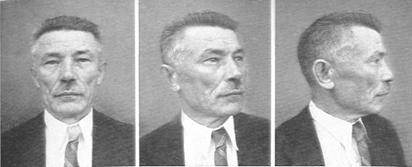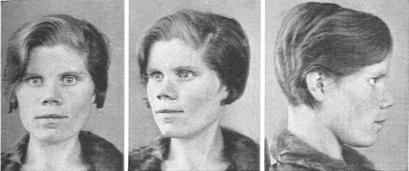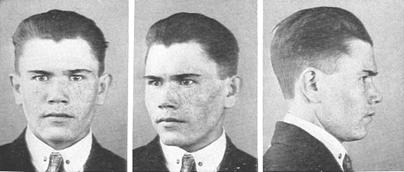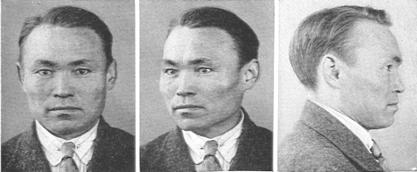|
(Photographic Supplement, Plate 2)
The Uralic linguistic stock, spoken by Lapps, Finns, Magyars, Asiatic
Ugrians, and Samoyeds, is divided into Finno-Ugrian and Samoyedic. The Ugrian
branch is today spoken by two widely separated groups, the Magyars of Hungary
and Transylvania, and the Ostiaks and Voguls of the Obi drainage. The early
Ugrians were presumably, like the Finns, Danubian-like or Nordic peoples of the
middle Volga country, who absorbed the older hunting population of the eastern
European forest. Later the Ugrians were subjected to mongoloid influences at the
times of Hunnish, Turkish, and Mongol invasions. The individuals shown on Plate
2 were chosen to illustrate in varying forms and degrees the old Ladogan racial
type.
FIG. 2 (3 views, Institute of Peoples of the North). An Ostiak woman from Siberia. The Ladogan facial features are usually better exemplified in women than in men. The Ostiak woman shown above is as good a Ladogan prototype as the Magyar shown above. Note the blond hair, light eyes, the great interorbital distance, the broad, low-bridged nose with elevated snub tip, and the wide malars.
FIG. 3 (3 views, Institute of Peoples of the North). An Ostiak man with some Samoyed admixture; the hair is brown, the eyes mixed, the face freckled. In addition to the Ladogan element seen in the first two, this individual probably contains some evolved mongoloid admixture.
FIG. 4 (3 views, Institute of Peoples of the North). A Vogul man; showing more evidence of mongoloid admixture than the above. It must be emphasized that nearly all of the mongoloid racial factors possessed by the Ugrian speakers resident in Siberia were acquired after their shift of territory from European Russia to Asia.
|



